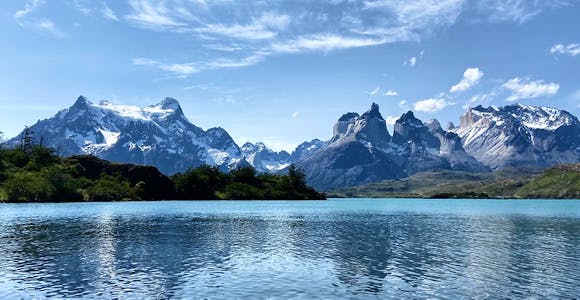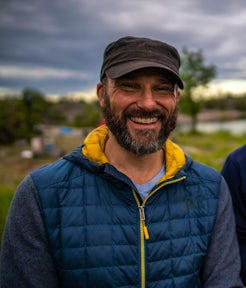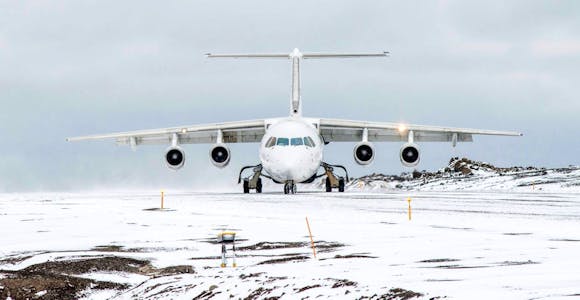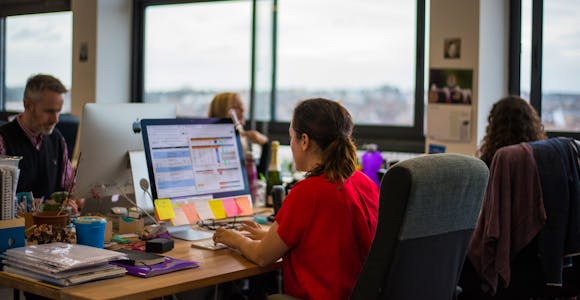Introducing Our Sustainability Strategy

These pages tell the story of our commitment to sustainability and our promise to you, our customers, to protect this planet and its most precious places.
Discover More
"Believe me, I know how exciting it is to buy new kit, dreaming of the next big adventure, but I’ve come to realise the price tag for ‘new’ is far greater than what’s on the label. By recognising the real cost of how I spend my money, I can make choices that align with my values. Less new, more making do."
Luke, Founder & Managing Director
We want to make it as easy as possible for our customers to make sustainable consumer choices when they travel with us. We’ve selected two action areas to focus on for Travel Better – clothing & equipment and single-use plastics.
Below, we’ll explain why we’ve chosen these areas and how your choices can make a positive impact.

You’ve done your research, the dates are in the diary and you’ve booked your trip. Now comes the fun part: the kit list. Travel to the ends of the earth requires technical clothing and equipment – some of which you might have, some of which you won’t.
The thing is, buying lots of new kit comes at a high cost – and not just for your wallet. Textile production produces around 1.2 billion tonnes of CO2 per year - more than international flights and maritime shipping combined. Not only is the garment industry polluting and resource-intensive1 (particularly when it comes to water use), it also has a terrible track record on human rights2.
Technical clothing is often made from synthetic fibres, which have a higher carbon impact and release microplastics when worn and washed.
So what’s a conscientious traveller to do? Here are our three steps to reducing the impact of your kit list, without compromising on its comfort, performance or quality.
Unnecessary ‘stuff’ will slow you down, so only pack what you need and not an item more. What’s more, flying with less luggage reduces a plane’s carbon emissions and could save you money on excess fees.
Each of our destinations has its own kit list. These have been honed over thousands of expeditions and will help you make well-considered choices about what to bring.
ACTION: Look at our kit recommendations for your trip and write your own list. Take the time to really reflect on what you need, and what you can leave behind. If you’re in any doubt, just call or email us – that’s what we’re here for.
Find out more about out Patagonia, Antarctica and Arctic kit recommendations.
You’ve fine-tuned your kit list to Shackleton standards, which means it’s now time to start sourcing. Rather than turning that kit list into a high-impact shopping list, here’s our quick guide to conscious consumerism*.
Make do
The best way to reduce your impact is to use what you already have. Are you sure you need a new jacket? Or could the one you already have do the job?
Hire/borrow
Do you have adventurous friends and family? Send round your kit list and ask if anyone can fill in the gaps. If you’re going on one of our Antarctic adventures, we recommend hiring some kit instead of buying new, and in fact many operators provide kit.
Buy second-hand
Good kit lasts. That means, with a bit of patience, you’ll be able to source high-quality second-hand clothing and equipment from sites like ebay or specialist second-hand shops.
Buy new
Buying new kit should be a last resort. If you do decide to splash out, consider selling the item after your return, or passing it on to someone else to use.
*We borrowed this idea from Sarah Lazarovic's ‘Buyerarchy of Needs’, which is itself inspired by Maslow’s Hierarchy of Needs. Ten points if you already knew all that.
It’s far too easy to buy cheap, low-quality goods that don’t last. Buying ‘cheap and often’ has a massive impact on the environment and usually ends up costing us more.
If our population reaches 9.6 billion by 2050, we’ll need the equivalent of almost three planets to provide the natural resources to sustain current lifestyles (1).
We’d love to help every Swoop customer buy less, and buy to last. Spending a bit more on things also tends to mean you take better care of them, which in turn increases their longevity. That means, next time you (or a friend or family member) decides to venture into the wilderness, all your clothing and equipment will be ready to go – again, and again, and again.
Textile production produces around 1.2 billion tonnes of CO2e per year - more than international flights and maritime shipping combined.
Our planet is facing a global plastic pollution crisis. Humans produce well over 300 million tons of plastic items every year – with the number rising annually. About half of that volume is ‘single use’, like plastic cups, bottles and takeaway containers.
Too much of this waste ends up in our oceans, breaking down into even more harmful microplastics. Plastic kills up to one million seabirds, 100,000 sea creatures (including turtles) and countless fish every year.
Plastic is even present in the remote and pristine locations we visit. Scientists have recently discovered microplastics embedded deep in the Arctic ice. Although most of our local partners avoid single-use plastics, you may be shocked by how much more throwaway plastic you encounter in Argentina and parts of Chile.
The best thing we can do – as travellers, and in our normal lives – is radically reduce our use of single-use plastics, ask businesses to do the same, and make sure if and when we do use them, they are disposed of correctly.



These pages tell the story of our commitment to sustainability and our promise to you, our customers, to protect this planet and its most precious places.
Discover More
As we all know, the more carbon dioxide we put in our atmosphere, the more our climate will change. We’re committed to reducing the impact of our carbon emissions.
Discover More
‘Getting our house in order’ means addressing what Swoop buys, how we travel and how we run our offices. We’ll keep reporting on our progress and aim to bring everyone who …
Discover More